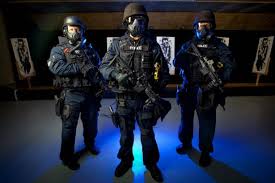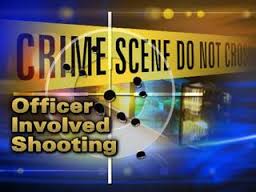 The shooting death of unarmed, black teenager, Michael Brown, by white police officer, Darren Wilson, in Ferguson, Missouri, on August 9, 2014, caused an international uproar and a microscopic evaluation of law enforcement’s use of force parameter.
The shooting death of unarmed, black teenager, Michael Brown, by white police officer, Darren Wilson, in Ferguson, Missouri, on August 9, 2014, caused an international uproar and a microscopic evaluation of law enforcement’s use of force parameter.
I’m not going into details of this particular, tragic event, but I can say from personal experience what takes place in the training and execution of deadly force application.
 Regular police officers undergo a thorough, basic training in the use of their service weapons and in the evaluation of situations where they may be required to use a lethal response. Most officers graduate the academy with a reasonable proficiency with their sidearm and perhaps a shotgun and carbine rifle. They go through yearly qualifications to maintain their skill and, thankfully, most go through their entire service without ever firing a shot.
Regular police officers undergo a thorough, basic training in the use of their service weapons and in the evaluation of situations where they may be required to use a lethal response. Most officers graduate the academy with a reasonable proficiency with their sidearm and perhaps a shotgun and carbine rifle. They go through yearly qualifications to maintain their skill and, thankfully, most go through their entire service without ever firing a shot.
Special Weapons and Tactics (SWAT) or Emergency Response Teams (ERT), like I served on, are trained to a significantly higher degree of proficiency, but the principles of using deadly force are the same.
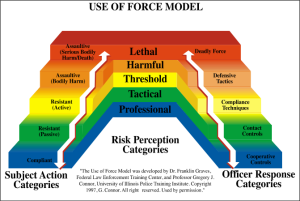 All officers are taught to assess their response to a dangerous situation by applying the Use Of Force Continuum. This is graphed out in either a lineal or a circular model and is a standard that provides guidelines as to how much force may be used against a resisting subject in a given situation.
All officers are taught to assess their response to a dangerous situation by applying the Use Of Force Continuum. This is graphed out in either a lineal or a circular model and is a standard that provides guidelines as to how much force may be used against a resisting subject in a given situation.
The assessment process has the officer perceiving the incident and considering the tactical response they need to evoke. Perception ranges from a cooperative subject, to one who is passively resisting, actively resisting, becoming assaultive, or presenting grievous bodily harm or death to the officer.
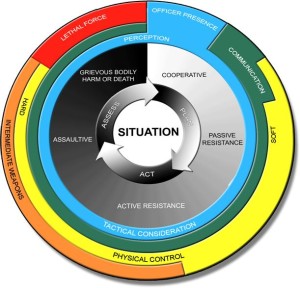 The officer’s tactical response can vary from simple communication, to soft or hard physical control, to the use of intermediate weapons such as the baton, pepper spray or Taser, right to the lethal force of shooting the subject. This is all fine and well in the classroom but in Real Life and on Real Street, this stuff can go down in seconds.
The officer’s tactical response can vary from simple communication, to soft or hard physical control, to the use of intermediate weapons such as the baton, pepper spray or Taser, right to the lethal force of shooting the subject. This is all fine and well in the classroom but in Real Life and on Real Street, this stuff can go down in seconds.
I don’t know how many times I’ve heard someone say “Couldn’t the police have just shot to wound, not to kill?” Well, that’s just not a reality given that the average police shootings occur within seven feet and in under two seconds.
The basic principle of use-of-force training is to condition a person so they’ll respond appropriately in a situation where they have little time to think. When a situation hits the danger level which requires a police officer to pull the trigger, there’s no time left to gamble on something fancy.
Contrary to popular belief, police officers are not trained to shoot to kill.
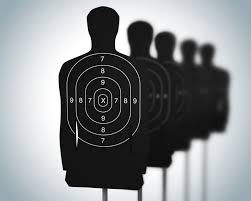 They’re trained to neutralize the subject and the most efficient way to do this is to aim for the center of body mass. Not the head. Not the elbow. Not the knee. Not the groin. And not to shoot the gun out of the bad guy’s hand.
They’re trained to neutralize the subject and the most efficient way to do this is to aim for the center of body mass. Not the head. Not the elbow. Not the knee. Not the groin. And not to shoot the gun out of the bad guy’s hand.
The center of mass, or ‘CX’ as it’s known on the firing range, is the easiest to hit and has the quickest effect in putting the subject down and out of commission. It’s where the vital organs are and where the central nervous system is most vulnerable.
Very few police shootings are found to be an unjustified use of force. In fact, many subjects survive a police bullet. The situation in Ferguson, Missouri, may be debatable about its justification, but all are in agreement that it was tragic.

